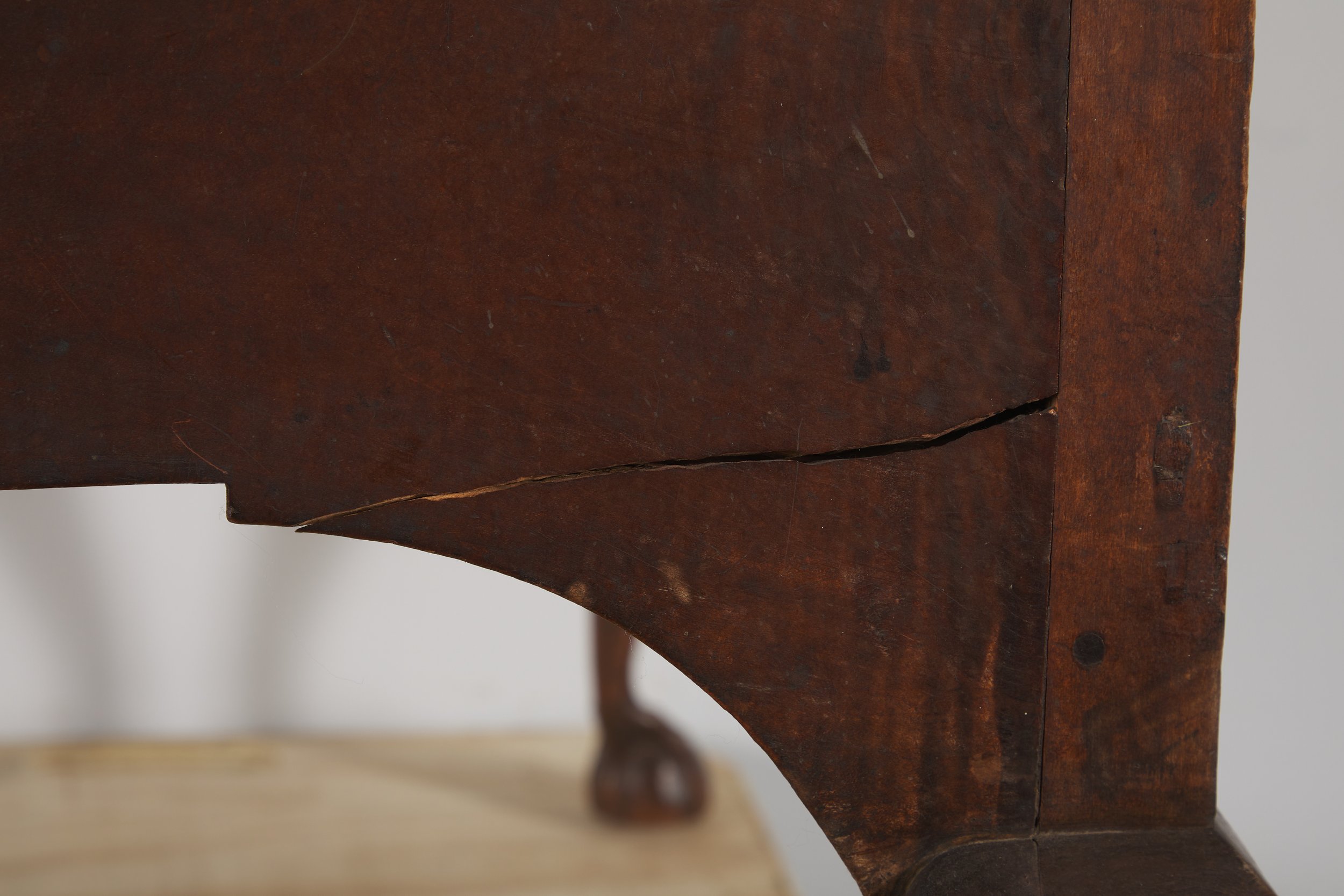Carved Maple High Chest of Drawers c.1790, before treatment
Having been brought up in New Hampshire, Marshall Field V had looked for a Dunlap piece for many years. “When this piece came on the market, I jumped on it!” This high chest of drawers is attributed to Major John Dunlap of Bedford, New Hampshire, circa 1790. “This high chest represents the highly innovative craftsmanship of Major John Dunlap (1746-1792) and Lt. Samuel Dunlap (1752- 1830), pioneers of a multigenerational family of cabinetmakers who worked in south-central New Hampshire in the late eighteenth and nineteenth centuries," (Leigh Keno American Antiques).
Bottom carcass, front
Bottom carcass, back
Bottom carcass, proper right
Bottom carcass, proper left
The superb craftsmanship of this high chest is undeniable, with highly figured maple, an elaborate gallery ornamented with pierced basket-weave panels, carved fans and quarter-fans, paired molded S-scrolls of the skirt with a cushioned surface outlined by a flat bead separating a heart-shaped cutout, slender cabriole legs with pointed knees and a pronounced inward curve, boldly-scrolled brackets, and half-ball webbed claw feet.
Top carcass, front
Top carcass, back
Top carcass, proper right
Top carcass, proper left
The high chest was in sound and stable condition when it arrived at The Center. After a detailed examination by Senior Conservator of Furniture, Stephen Ryan, a few areas were identified in need of treatment. The polish surface had dulled considerably. and the proper left top drawer had a previous repair that had discolored. The sides of the top carcass had shrunk, and the drawer runners second from the bottom were pushing the drawer rail forward. Considerable shrinkage splits were present on both sides of the bottom carcass as well.
Detail of shrinkage split
Stephen began treatment by cleaning the surfaces to remove particulate matter before rejuvenating the polished surface with two coats of carnauba wax. Then, the shrinkage splits were fitted with balsa wood. Steve chooses balsa wood for an important reason: “the treatment is fairly straightforward, although filling shrinkage splits with balsa wood is something that probably only I do, and anyone who works with me. The standard treatment is to fill the gaps with the same wood the piece is made of. However, that method does not allow for future movement.” Balsa wood has the important ability to compress or stretch with future wood movement.
Shrinkage splits with balsa wood fills
Once sized and fit, the balsa wood fills were colored to emulate the surrounding surface, and the discolored previous repair will be retouched to blend with the surrounding area as best as possible.
The drawer runners were also built up to compensate for wear on drawer sides, and both drawer runners were shortened to reduce the gap in the drawer rail joints and allow the drawer rail to sit flush with both sides. The treatment of this stunning 18th century furniture is complete without detracting from the incredible work of the Dunlap family. Steve shared his final thoughts, “I’ve been conserving furniture in the United States for the past 20 years, and this is the finest example of American cabinetmaking that I have worked on. It was very enjoyable for me to work on such an exceptional piece.”














